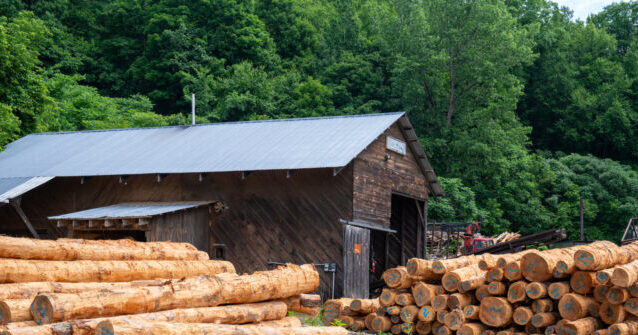President Donald Trump announced new tariffs Monday on imported lumber, timber, and wooden furniture, escalating his use of trade measures to bolster U.S. manufacturing.
The proclamation sets a 10 percent tariff on timber and lumber imports and a 25 percent duty on kitchen cabinets, bathroom vanities, and upholstered furniture. The tariffs take effect Oct. 14 at 12:01 a.m. Eastern.
The White House said the move was justified under Section 232 of the Trade Expansion Act of 1962, which allows tariffs on imports deemed threats to national security. Trump argued that foreign wood products have weakened U.S. mills and supply chains, leaving the country vulnerable in areas ranging from housing for military personnel to missile-defense components.
The duties will rise further in the new year. Beginning Jan. 1, tariffs on upholstered wooden products will increase to 30 percent and kitchen cabinets and vanities will climb to 50 percent for countries that fail to reach agreements with the United States.
Canada, the largest softwood lumber supplier to the United States, will face the relatively modest 10 percent duty. Higher levies will fall on major exporters of furniture and cabinets such as Vietnam, Mexico, and China. As part of negotiated trade frameworks, tariffs from Britain will be capped at 10 percent, while those from the European Union and Japan will not exceed 15 percent.
Business groups warned, without evidence, that the move could raise costs for construction and homebuilding. The U.S. Chamber of Commerce, in particular, argued that wood imports do not pose a national security risk and claimed the tariffs would burden American consumers. But the Harvard Business School Tariff Tracker suggests otherwise: tariffed goods rose in price more slowly than untariffed imports during Trump’s first term, and domestic competitors often lowered their prices.
Trump’s move extends his use of Section 232, the statute his administration relied on to raise tariffs on steel and aluminum in 2018. Those measures were challenged in court but ultimately upheld when the Supreme Court declined to overturn them. By contrast, a separate set of “reciprocal” tariffs, which the administration has defended under a different section of trade law, has been struck down by lower courts and is now under Supreme Court review.
Read the full article here


